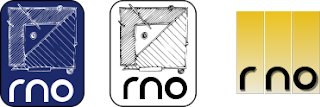It has come to my attention that folks are still struggling with installing Linux. Mostly it is the laptop brigade and those who insist on wireless. No big deal, you slap in the CD, boot-n-go, right? Gosh I hate logistics, but maneuvering your way to total access and mobility on a Linux desktop is part science and part art (ooh, I said art!). We will start with realizations.
The major influence in the computer world, both software and hardware is Microsoft. Almost everything is seasoned to their liking. This is apparent when you want something different. Hardware is made with Microsoft in mind, that is where the money is, the same is true with drivers that support the hardware.
Chances are you did not intend to install Linux when you bought your computer, otherwise Linux installation would have been a factor in your choice. If Linux were pre-installed all of your problems would have been dealt with. There are lists that show successful operation of Linux on various hardware combinations with various distributions of Linux. They are called Hardware Compatibility List and the major distributions have them. Laptops are a special case so go to
http://www.linux-laptop.net and
http://tuxmobil.org to see how others have faired with your brand of laptop. Decide wheither you want to dual-boot (have choice of running either MS or Linux) or you want to wipe MS and install Linux.
Oh, you lost, misplaced or trashed the documentation that came with your hardware. This is the beginning of problems for servicing any computer difficulty. You need to know brand names, model numbers, serial numbers, version numbers or at least have a listing on hand. My tip for the day:
http://www.belarc.com/free_download.html . This Belarc program will give you a listing of everything on your computer, hardware and software. It runs in MS Windows, don't know about Vista. Armed with this you can now enter the Linux exception zone to see if there are known problems that others have encountered for the same or similar hardware as you have.
This is where you get your Google on. Wireless, thanks to Microsoft influenced hardware and hardware driver companies, is a problem in most Linux distributions, but there are exceptions. Lucky you if you have hardware that works well, if not find a geek, a nerd or a techie who has dealt with wireless problems. Local Linux users groups might have a few. User forums on your distributions web site might help. General Linux web sites might point you to info. Computer stores and Tech squads are more than likely Microsoft oriented, little if any Linux experience. You can always ask.
Don't forget, you can run the Linux live-CD, save to a jump drive. And you can buy Linux and purchase a service arrangement if you really need it. Take my word, if Microsoft were not dominate in the computer world, you'd be scrambling to install it too.
Your investment in Microsoft software is wasted on Linux. While you can run some in Wine or virtual machine, it is not 100%. Linux has software to do what MS Windows apps do. If you have specific stuff that only runs in MS Windows that you must have, consider dual-booting.
My main wish is that people wouldn't insist within themselves, that they are so smart, they can figure it out and be a little patient with ones who tend to do the same yet are trying to help. Geeks and gurus are still rare, most are a range of average intelligence. This is why users groups are important, we can share info and cluster to come up with solutions.
 That's Xfce sporting a pen drawing I scanned in using the Xsane plugin in GIMP, then imported into Inkscape. Don't let the spare look of Xfce fool you, a right mouse click on the desktop and I've got menus galore. So, Gnome has some things I like and Xfce has things also. The two are compatible so I am able to blend some functions. I just like uncluttered looks and feels.
That's Xfce sporting a pen drawing I scanned in using the Xsane plugin in GIMP, then imported into Inkscape. Don't let the spare look of Xfce fool you, a right mouse click on the desktop and I've got menus galore. So, Gnome has some things I like and Xfce has things also. The two are compatible so I am able to blend some functions. I just like uncluttered looks and feels.






